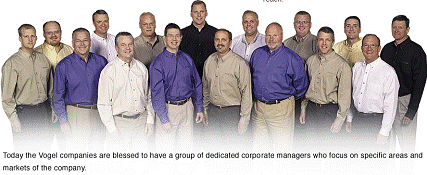WIPO Arbitration and Mediation Center
ADMINISTRATIVE PANEL DECISION
Vogel Paint, Inc. v. Zhongshan Lingjun Paint Co., Ltd., lingjun paint
Case No. D2011-1719
1. The Parties
The Complainant is Vogel Paint, Inc. of Orange City, Iowa, United States of America, internally represented.
The Respondent is Zhongshan Lingjun Paint Co., Ltd., lingjun paint of Guangdong, China.
2. The Domain Name and Registrar
The disputed domain name <diamond-vogel.com> (the “Disputed Domain Name”) is registered with Beijing Innovative Linkage Technology Ltd. dba dns.com.cn. (the “Registrar”).
3. Procedural History
The Complaint was filed with the WIPO Arbitration and Mediation Center (the “Center”) on October 10, 2011. On October 11, 2011, the Center transmitted by email to the Registrar a request for registrar verification in connection with the Disputed Domain Name. On October 12, 2011 and on October 21, 2011, the Registrar transmitted by email to the Center its verification response disclosing registrant and contact information for the Disputed Domain Name which differed from the named Respondent and contact information in the Complaint. The Center sent an email communication to the Complainant on October 21, 2011 providing the registrant and contact information disclosed by the Registrar, and requesting the Complainant to submit an amendment to the Complaint. The Complainant filed an amended Complaint on October 25, 2011. On October 12, 2011, the Center transmitted an email communication to the parties in both Chinese and English regarding the language of the proceedings. On the October 17, 2011, the Complainant confirmed its request that English be the language of the proceedings. The Respondent did not comment on the language of the proceedings by the specified due date.
The Center verified that the Complaint together with the amended Complaint satisfied the formal requirements of the Uniform Domain Name Dispute Resolution Policy (the “Policy” or “UDRP”), the Rules for Uniform Domain Name Dispute Resolution Policy (the “Rules”), and the WIPO Supplemental Rules for Uniform Domain Name Dispute Resolution Policy (the “Supplemental Rules”).
In accordance with the Rules, paragraphs 2(a) and 4(a), the Center formally notified the Respondent of the Complaint, and the proceedings commenced on October 26, 2011. In accordance with the Rules, paragraph 5(a), the due date for Response was November 15, 2011. The Respondent did not submit any response. Accordingly, the Center notified the Respondent’s default on November 16, 2011.
The Center appointed Kar Liang Soh as the sole panelist in this matter on November 25, 2011. The Panel finds that it was properly constituted. The Panel has submitted the Statement of Acceptance and Declaration of Impartiality and Independence, as required by the Center to ensure compliance with the Rules, paragraph 7.
4. Factual Background

The Complainant has had an online presence under the domain name <diamondvogel.com> since 1997. The Complainant also operates websites under the domain names <themiracleofcolor.com> and <themiracleofpaint.com> which are hyperlinked from the website resolved from <diamondvogel.com>. The DIAMOND VOGEL Logo features prominently on all these websites and the Complainant’s paint products as depicted on these websites.
As of October 9, 2011, the website at <themiracleofpaint.com> featured a tagline “Influence, inspiration, innovation, integrity” and the following photograph (“Photograph 1”):


The Complainant sent a letter to the Respondent on November 19, 2009 demanding transfer of the Disputed Domain Name to the Complainant and to refrain from claiming to be connected to the Complainant. The Complainant’s letter also alluded to two China trademark applications No. 7117348 and No. 7117349. The Respondent replied on November 25, 2009 assuring that the website would be shut down temporarily and sought further information. As the Complainant did not provide any information regarding the status of the China trademark applications, the Panel took the liberty to query the online database of the China Trademark Office. The database indicated that China trademark application No. 7117348 relates to the Chinese characters”戴梦得.瓦格” and has achieved registration while No. 7117349 relates to the words “Diamond Vogel” and was rejected.
5. Parties’ Contentions
A. Complainant
The Complainant contends that:
a) The Disputed Domain Name is confusingly similar to the trademark DIAMOND VOGEL. The addition of a hyphen between the words “Diamond” and “Vogel” does not distinguish the Disputed Domain Name from the trademark DIAMOND VOGEL;
b) The Respondent does not have any rights or legitimate interests in the Disputed Domain Name. The Respondent is not affiliated with the Complainant and is not authorized to use the DIAMOND VOGEL trademark; and
c) The Respondent registered and is using the Disputed Domain Names in bad faith. The Respondent is falsely holding itself out to be a subsidiary or authorized distributor of the Complainant and using the Disputed Domain Name to sell unauthorized and non-genuine products. The Respondent has intentionally attempted to attract, for commercial gain, Internet users to the Respondent’s website by creating a likelihood of confusion with the Complainant’s mark as to the source, sponsorship, affiliation, or endorsement of the Respondent’s website or of the Complainant’s products.
B. Respondent
The Respondent did not reply to the Complainant’s contentions.
6. Discussion and Findings
6.1. Language of the proceedings
The Complainant requests that the proceedings be conducted in English even though the default language of the proceedings should be Chinese in view of the language of the Registration Agreement being in Chinese. Having regard to circumstances, in particular the following, the Panel determines that English be adopted as the language of the proceedings:
a) English is used on the website resolved from the Disputed Domain Name. The Respondent is clearly proficient in English or has the means to deal adequately with the English language;
b) The Respondent has neither chosen to respond to the Complaint nor made known any preference for the language of the proceedings;
c) The Complaint has already been submitted in English. The Complainant does not employ anyone who is familiar with Chinese and it would be financially onerous on the Complainant to translate the Complaint into Chinese; and
d) There does not appear to be any procedural benefit that may be achieved by insisting on the default language of the proceedings and it is likely that delay to the proceedings would result should parties be required to re-submit documents in Chinese.
6.2. Discussion
In order to succeed in the proceedings, the Complainant must establish all 3 limbs of paragraph 4(a) of the Policy. The Panel proceeds to consider each of these limbs below.
A. Identical or Confusingly Similar
The Complainant clearly has trademark rights in the trademark DIAMOND VOGEL. The Disputed Domain Name incorporates the trademark DIAMOND VOGEL in its entirety. The only difference between the Disputed Domain Name and the trademark DIAMOND VOGEL is the addition of a hyphen between the words “Diamond” and “Vogel”. It is common view of past UDRP panels that when the words of a trademark and a domain name are the same, the mere introduction or absence of punctuation marks does not serve to alter the fact that they are identical or confusingly similar (e. g., Chernow Communications, Inc. v. Jonathan D. Kimball, WIPO Case No. D2000-0119). The Panel does not see any special circumstances of the case to depart from this position. It is therefore held that the Disputed Domain Name is confusingly similar to the trademark DIAMOND VOGEL. The first limb of paragraph 4(a) is established.
B. Rights or Legitimate Interests
The various statements and claims on the Respondent’s website are clearly directed at associating the Respondent with an American company under the trademark DIAMOND VOGEL. The Complainant is an American company, owns the trademark DIAMOND VOGEL and has been operating under the trademark DIAMOND VOGEL for 35 years. There is no doubt in the Panel’s mind that the Respondent’s target of association is the Complainant.
However, the Complainant has denied any association with the Respondent. If the Respondent were in fact associated with the Complainant, when faced with the demand letter of the Complainant, the natural reaction would have been to respond strongly with disappointment, question the denial and provide justification (for example, providing the trademark licensing and authorization certificates). Surprisingly, the Respondent did none of these but simply requested more information and assured the Complainant that it would temporarily shut down its website.
The only reasonable conclusion that the Panel is able to draw from the circumstances in the absence of any explanation from the Respondent is that the Respondent was not in a position to assert any rights or legitimate interests in the Disputed Domain Name. Although the Respondent had a trademark application for DIAMOND VOGEL in China (trademark application No. 7117349), this application was rejected so and it would appear that no rights have been granted to the Respondent in China.
The Respondent’s China trademark registration No. 7117348 for the Chinese characters ”戴梦得.瓦格” is also noted. However, the Disputed Domain Name incorporates the English words “Diamond Vogel” and not the Chinese characters. Although the Chinese characters may possibly be a vague Chinese transliteration of “Diamond Vogel”, it has not been asserted to be so and is simply too different in appearance, pronunciation, meaning and concept from “Diamond Vogel”. The Panel accordingly takes the view that the Chinese trademark registration No. 7117348 does not imbue the Respondent with any rights or legitimate interests in the words “Diamond Vogel”.
Based on the available evidence, the Panel is of the view that the Complainant has shown a prima facie case in relation to the Respondent’s lack of rights or legitimate interests in the Disputed Domain Name. Since no response was filed, the prima facie case is not rebutted and the second limb of paragraph 4(a) is made out.
C. Registered and Used in Bad Faith
Paragraph 4(b)(iv) of the Policy provides an example of bad faith registration and use as follows:
“by using the domain name, you have intentionally attempted to attract, for commercial gain, Internet users to your web site or other on-line location, by creating a likelihood of confusion with the complainant's mark as to the source, sponsorship, affiliation, or endorsement of your web site or location or of a product or service on your web site or location.”
The evidence strongly suggests that the website resolved from the Disputed Domain Name is intended to support the Respondent’s objective for commercial gain. The website clearly indicated that the Respondent is in the same trade as the Complainant (i. e., paints). It also shows the copious use of the Complainant’s DIAMOND VOGEL Logo. The website is clearly calculated to draw an association between the Complainant and the Respondent which the Complainant has categorically denied.
The evidence shows that the Respondent is fully aware of the DIAMOND VOGEL Logo and the Complainant’s existence. The content of the website resolved from the Disputed Domain Name consistently attempted to constitute the Respondent as part of the Complainant’s group of companies and as the Complainant’s extension into the China market. With the denial of the Complainant which has not been challenged by the Respondent, the Panel is led to conclude that the content of the website is untrue and deceptive.
The evidence is strongly weighted towards showing that the Respondent is using the Disputed Domain Name with an intention to attract for commercial gain, not only Internet users to the Respondent’s website but also the Respondent’s products, by creating a likelihood of confusion with the DIAMOND VOGEL trademark as to the source, sponsorship, affiliation, or endorsement of the Respondent’s website and the Respondent’s products. The circumstances epitomize the example of bad faith registration and use under paragraph 4(b)(iv) of the Policy. The Panel holds that the third limb of paragraph 4(a) is established.
7. Decision
For the foregoing reasons, in accordance with paragraphs 4(i) of the Policy and 15 of the Rules, the Panel orders that the Disputed Domain Name, <diamond-vogel.com>, be transferred to the Complainant.
Kar Liang Soh
Sole Panelist
Dated: December 19, 2011